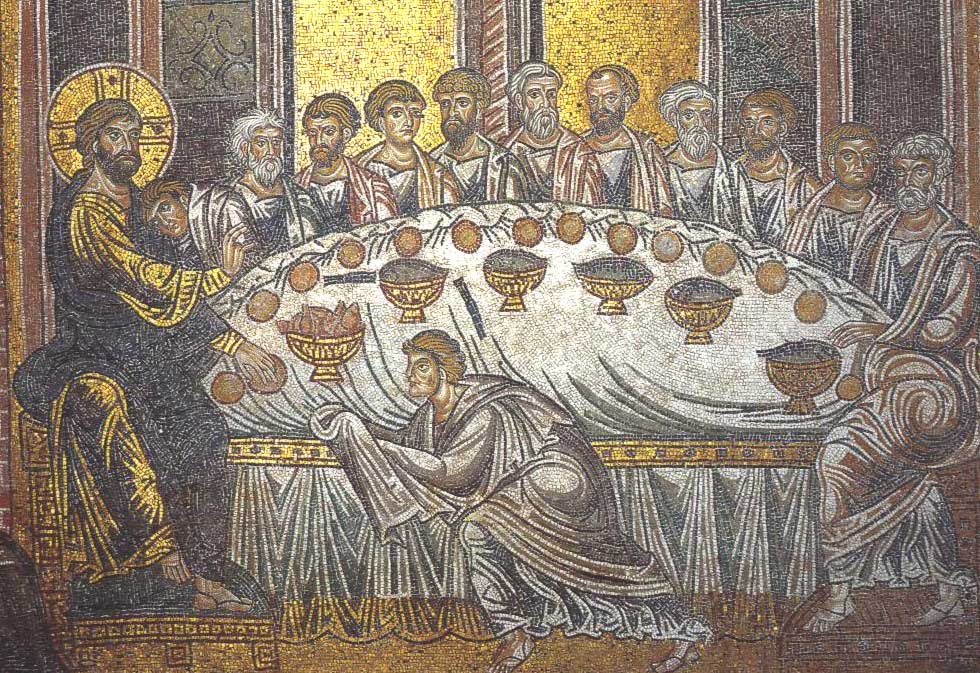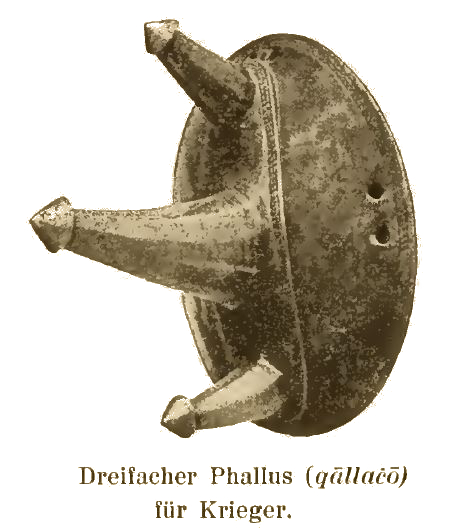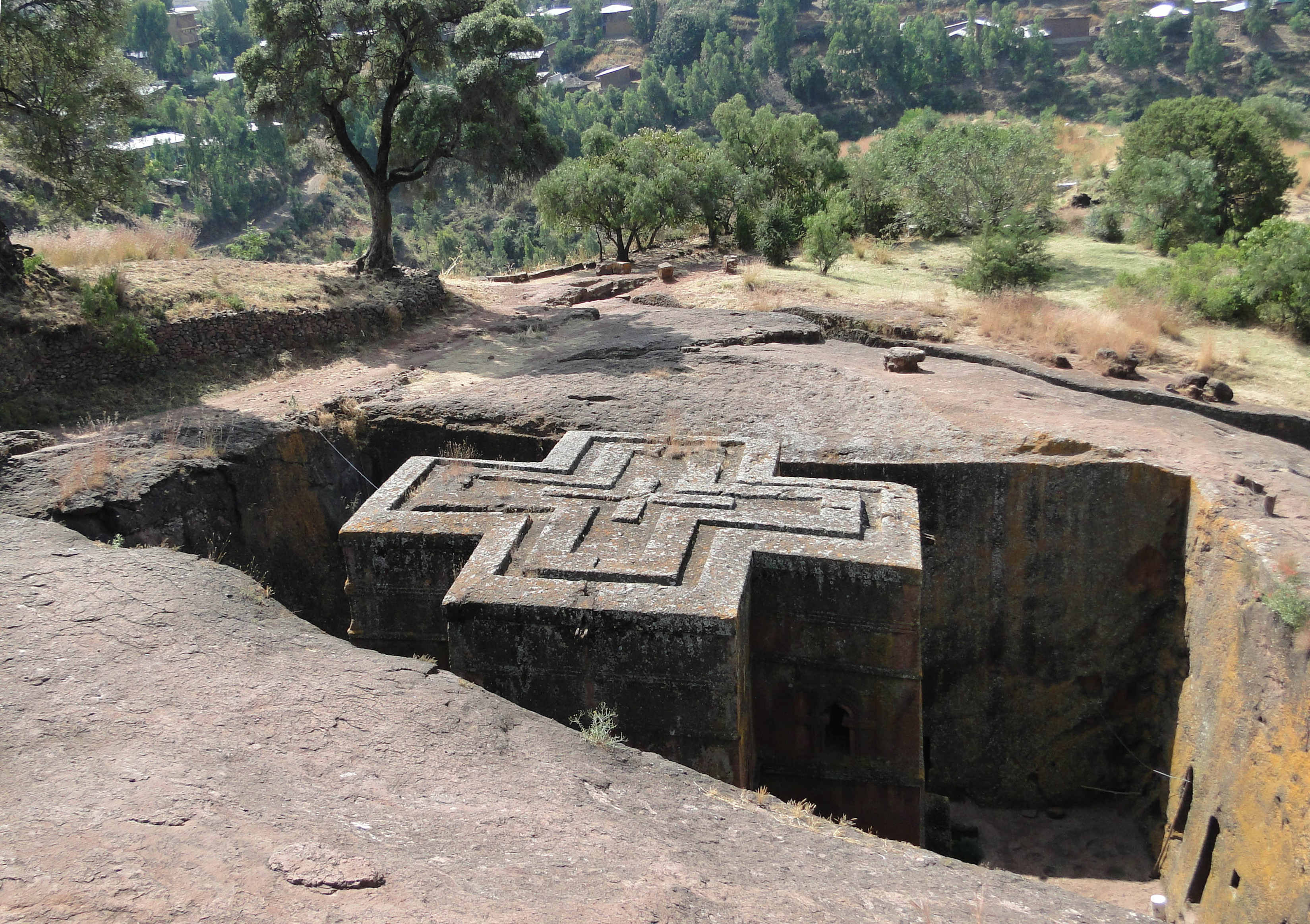|
Yekuno Amlak Of Ethiopia
Yekuno Amlak ( Ge’ez: ይኩኖ አምላክ); throne name Tasfa Iyasus (ተስፋ ኢየሱስ; died 19 June 1285) was Emperor of Ethiopia, and the founder of the Solomonic dynasty, which lasted until 1974. He was a ruler from Bete Amhara (in parts of modern day Wollo and northern Shewa) who became the Emperor of Ethiopia following the defeat of the last Zagwe king. Rise to power Yekuno Amlak hailed from an ancient Amhara family. Much of what is known about Yekuno Amlak is documented; his letter to the Egyptian ruler serving as one of the oldest examples, along with medieval hagiographies, and to a lesser extent based on oral traditions. Yekuno Amlak was the local ruler of Geshen and Ambassel around the Lake Hayq region. where he was educated at Lake Hayq's Istifanos Monastery. Later medieval hagiographies state Saint Tekle Haymanot raised and educated him, helping him depose the last king of the Zagwe dynasty. Earlier hagiographies, however, state that it was Iyasus ... [...More Info...] [...Related Items...] OR: [Wikipedia] [Google] [Baidu] |
Emperor Of Ethiopia
The emperor of Ethiopia ( gez, ንጉሠ ነገሥት, nəgusä nägäst, "King of Kings"), also known as the Atse ( am, ዐፄ, "emperor"), was the hereditary monarchy, hereditary ruler of the Ethiopian Empire, from at least the 13th century until the abolition of the monarchy in 1975. The emperor was the head of state and head of government, with ultimate executive power, executive, judicial power, judicial and legislative power in that country. A ''National Geographic'' article from 1965 called imperial Ethiopia "nominally a constitutional monarchy; in fact [it was] a benevolent dictatorship, benevolent autocracy". Title and style The title "King of Kings", often rendered imprecisely in English as "emperor", dates back to ancient Mesopotamia, but was used in Aksumite Empire, Axum by King Sembrouthes (c. 250 AD). However, Yuri Kobishchanov dates this usage to the period following the Persian Empire, Persian victory over the Roman Empire, Romans in 296–297. The most notabl ... [...More Info...] [...Related Items...] OR: [Wikipedia] [Google] [Baidu] |
Ambassel
Ambassel (Amharic: ዐምባሰል) is a woreda in Amhara Region, Ethiopia, and an ''amba'', or mountain fortress, located in the woreda. The word Ambasel is derived from two words "Amba" from the Amharic word for plateau, and “Asel” from the Arabic language, which means honey. Together, it means “plateau of honey” or the “land of honey” the woreda is named for this feature. Located in the Debub Wollo Zone, Ambassel woreda is bordered on the west by the Bashilo which separates it from Tenta, on the north by the Semien Wollo Zone, on the southeast by the Mille River which separates it from Tehuledere, and on the south by Kutaber; the Walano, a tributary of the Bashilo, defines most of its southern border. Its largest town is Wuchale. Elevations in this woreda range from 1200 to 3200 meters above sea level; the divide between the drainage areas of the Nile and the Awash runs through the middle of Ambassel. Rivers include the Waha Titu. Notable landmarks include Amba ... [...More Info...] [...Related Items...] OR: [Wikipedia] [Google] [Baidu] |
Sultanate Of Shewa
The Makhzumi dynasty also known as Sultanate of Shewa or Shewa Sultanate, was a Muslim kingdom in present-day Ethiopia. Its capital Walale was situated in northern Hararghe in Harla country. Its territory extended possibly to some areas west of the Awash River. The port of Zeila may have influenced the kingdom. The rise of the Makhzumi state at the same time resulted in the decline of the Kingdom of Axum. Several engravings dating back to the 13th century showing the presence of the kingdom are found in Chelenqo, Bate, Harla near Dire Dawa and Munessa near Lake Langano. The Shewa sultanate was one of the oldest documented Muslim states in the region. The state ran along Muslim trade lines and dominions known to the Arab world as the ''country of Zeila''. Its founding dynastic family, the Makhzumis, is said to have consisted of Arab immigrants who arrived in Showa during the 7th century. This ruling house governed the polity from AH 283/AD 896 to 1285–86, a period of three hundred ... [...More Info...] [...Related Items...] OR: [Wikipedia] [Google] [Baidu] |
Last Supper
Image:The Last Supper - Leonardo Da Vinci - High Resolution 32x16.jpg, 400px, alt=''The Last Supper'' by Leonardo da Vinci - Clickable Image, Depictions of the Last Supper in Christian art have been undertaken by artistic masters for centuries, Leonardo da Vinci's The Last Supper (Leonardo), late-1490s mural painting in Milan, Italy, being the best-known example. ''(Clickable image—use cursor to identify.)'' poly 550 2550 750 2400 1150 2300 1150 2150 1200 2075 1500 2125 1525 2300 1350 2800 1450 3000 1700 3300 1300 3475 650 3500 550 3300 450 3000 Bartholomew the Apostle, Bartholomew poly 1575 2300 1625 2150 1900 2150 1925 2500 1875 2600 1800 2750 1600 3250 1425 3100 1400 2800 1375 2600 James, son of Alphaeus, James Minor poly 1960 2150 2200 2150 2350 2500 2450 2575 2375 2725 2375 2900 2225 3100 2225 3225 1600 3225 1825 2700 1975 2450 1925 2300 Saint Andrew, Andrew poly 2450 2575 2775 2500 2700 2650 2800 2700 2600 3000 2600 3250 2300 3250 2200 3200 2300 3000 Saint Peter, Peter p ... [...More Info...] [...Related Items...] OR: [Wikipedia] [Google] [Baidu] |
Book Of The Cock
The ''Book of the Cock'' (alternatively the Ethiopic ''Book of the Cock'' or the ''Book of the Rooster''; Geʽez: , , , መጽሐፈ፡ ዶርሆ፡; French: ) is a Geʽez narrative of the passion of Jesus (a passion gospel). It was likely written in the fifth or sixth centuries and is based on an earlier version in Arabic or Greek. It has contemporary use among some Ethiopian Christians. Description and contents The ''Book of the Cock'' is a Geʽez narrative of the passion of Jesus (a passion gospel). It is likely based on a (an earlier version) in Arabic or Greek. It was probably written in the 400s or 500s. It uses material from the four gospels (Mark, Luke, Matthew, and John) and various other sources. It describes the final three days of Jesus's life, including a sequence where he reanimates a rooster who spies on Judas Iscariot plotting his betrayal of Jesus. The rooster tells Jesus and his disciples of the plan. Among other events, it describes John the Evangelis ... [...More Info...] [...Related Items...] OR: [Wikipedia] [Google] [Baidu] |
Kingdom Of Kaffa
The Kingdom of Kaffa was a kingdom located in what is now Ethiopia from 1390 to 1897, with its first capital at Bonga. The Gojeb River formed its northern border, beyond which lay the Gibe kingdoms; to the east the territory of the Konta and Kullo peoples lay between Kaffa and the Omo River; to the south numerous subgroups of the Gimira people, and to the west lay the Majangir people. The native language, also known as Kaffa, is one of the Omotic group of languages. Kaffa was divided into four sub-groups, who spoke a common language Kefficho, one of the Gonga/Kefoid group of Omotic languages; a number of groups of foreigners, Ethiopian Muslim traders and members of the Ethiopian Church, also lived in the kingdom. There were a number of groups of people, "but with the status of submerged status", who also lived in the kingdom; these included the ''Manjo'', or hunters; the ''Manne'', or leatherworkers; and the ''Qemmo'', or blacksmiths. The ''Manjo'' even had their own king ... [...More Info...] [...Related Items...] OR: [Wikipedia] [Google] [Baidu] |
Ethiopian Church
The Ethiopian Orthodox Tewahedo Church ( am, የኢትዮጵያ ኦርቶዶክስ ተዋሕዶ ቤተ ክርስቲያን, ''Yäityop'ya ortodoks täwahedo bétäkrestyan'') is the largest of the Oriental Orthodox Churches. One of the few Christian churches in sub-Saharan Africa originating before European colonization of the continent, the Ethiopian Orthodox Tewahedo Church dates back to the acceptance of Christianity by the Kingdom of Aksum in 330, and has between 36 million and 49.8 million adherents in Ethiopia. It is a founding member of the World Council of Churches. The Ethiopian Orthodox Tewahedo Church is in communion with the other Oriental Orthodox churches (the Eritrean Orthodox Tewahedo Church, the Coptic Orthodox Church of Alexandria, the Malankara Orthodox Syrian Church, the Armenian Apostolic Church, and the Syriac Orthodox Church). The Ethiopian Orthodox Tewahedo Church had been administratively part of the Coptic Orthodox Church of Alexandria from the fir ... [...More Info...] [...Related Items...] OR: [Wikipedia] [Google] [Baidu] |
Ichege
Ethiopian ecclesiastical titles refers to the offices of the Ethiopian Orthodox Tewahedo Church, a hierarchical organization. Some of the more important offices are unique to it. Titles Ethiopian ecclesiastical titles include: *Patriarch we Re'ese Liqane Papasat — Patriarch and First of the Archbishop, meaning Catholicos. Since 1959, the title of the head of the Ethiopian Orthodox Church is Patriarch Catholicos of Ethiopia. The first Patriarch, Abuna Basilios was enthroned by the Coptic Orthodox Pope Cyril VI in 1959, and so the Patriarchs of Ethiopia are part of the Apostolic succession of the Holy See of St. Mark. The Ethiopian Patriarchate combined the old offices of Abuna and Ichege (see below). In 2001, the title of Archbishop of Axum was added to the titles of the Patriarch after Axum was elevated to the rank of an Archdiocese by the Holy Synod. * Abuna — Metropolitan Archbishop of the Ethiopian Orthodox Church. From the 4th century until the middle of the 20th ... [...More Info...] [...Related Items...] OR: [Wikipedia] [Google] [Baidu] |
Amda Seyon
Amda Seyon I ( gez, ዐምደ ፡ ጽዮን , am, አምደ ፅዮን , "Pillar of Zion"), throne name Gebre Mesqel (ገብረ መስቀል ) was Emperor of Ethiopia from 1314 to 1344 and a member of the Solomonic dynasty. He is best known in his chronicles as a heroic warrior against the Muslims, and is sometimes considered to have been the founder of the Ethiopian state. Most of his wars were against the Muslim kingdoms to the southeast, which he was able to fight and generally defeat one by one, despite their plans to unite against him. Hence, he substantially enlarged his kingdom by gradually incorporating a number of neighboring states. His conquests of Muslim borderlands greatly expanded Ethiopian territory and power in the region, which would be maintained for centuries after his death. Amda Seyon asserted the strength of the new Solomonic dynasty and therefore legitimized it. These expansions further provided for the spread of Christianity to frontier areas, sparking ... [...More Info...] [...Related Items...] OR: [Wikipedia] [Google] [Baidu] |
Debre Libanos
Debre Libanos (Amharic: ደብረ ሊባኖስ, om, Dabra libanose) is an Ethiopian Orthodox Tewahedo monastery, lying northwest of Addis Ababa in the North Shewa Zone of the Oromia Region. It was founded in 1284 by Saint Tekle Haymanot as Debre Atsbo and was renamed as Debre Libanos in the 15th century. He meditated in a cave above the current monastery for 29 years. The monastery's chief abbot, called the ''Ichege'', was the second most powerful official in the Ethiopian Church after the '' Abuna''. The monastery complex sits on a terrace between a cliff and the gorge of one of the tributaries of the Abbay River (the Blue Nile). None of the original buildings of Debre Libanos survive, although David Buxton suspected "there are interesting things still to be found among the neighbouring cliffs". Current buildings include the church over Tekle Haymanot's tomb, which Emperor Haile Selassie ordered constructed in 1961; a slightly older Church of the Cross, where Buxton was t ... [...More Info...] [...Related Items...] OR: [Wikipedia] [Google] [Baidu] |
Iyasus Mo'a
Iyasus Mo'a (1214 – 1294) was an Ethiopian saint of the Ethiopian Orthodox Tewahedo Church; his feast day is 5 December (26 Hedar in the Ethiopian calendar). In life he was an Ethiopian monk and abbot of Istifanos Monastery in Lake Hayq of Amba Sel. Life Iyasus was born in Dehana, which may have been the woreda in the Wag Hemra Zone, although G.W.B. Huntingford identifies it with Dahna, a village 15 miles east of the Tekeze River.Huntingford, ''The Historical Geography of Ethiopia'' (London: The British Academy, 1989), p. 74 At the age of 30, Iyasus Mo'a travelled to the monastery of Debre Damo during the abbacy of Abba Yohannis where he was made a monk, and was given arduous tasks by the abbot. After seven years, he left Debra Damo and came to live with a hermetic community around the eighth-century church of Istanafanos at Lake Hayq, and organized this group into a monastery with rules and a school. One of the students of this school was Saint Tekle Haymanot, who stayed ... [...More Info...] [...Related Items...] OR: [Wikipedia] [Google] [Baidu] |
Zagwe Dynasty
The Zagwe dynasty ( Ge'ez: ዛጔ ሥርወ መንግሥት) was an Agaw medieval dynasty that ruled the northern parts of Ethiopia and Eritrea, after the historical name of the Lasta province. Centered at Lalibela, it ruled large parts of the territory from approximately 900 to 1270 CE, when the last Zagwe King Za-Ilmaknun was killed in battle by the forces of the Amhara King Yekuno Amlak. The name of the dynasty is thought to derive from the ancient Ge'ez phrase ''Ze- Agaw'', meaning "of the Agaw", in reference to the Mara Tekle Haymanot, the founder of the dynasty. Zagwe's best-known King was Gebre Mesqel Lalibela, who is credited with having constructed the rock-hewn monolithic churches of Lalibela. David Buxton has stated that the areas under the direct rule of the Zagwe kings apart from the centre of power in Lasta "probably embraced the highlands of modern Eritrea, Tigray, Waag and Bete Amhara and thence westwards towards Lake Tana (Begemder)." Unlike the practice of ... [...More Info...] [...Related Items...] OR: [Wikipedia] [Google] [Baidu] |







